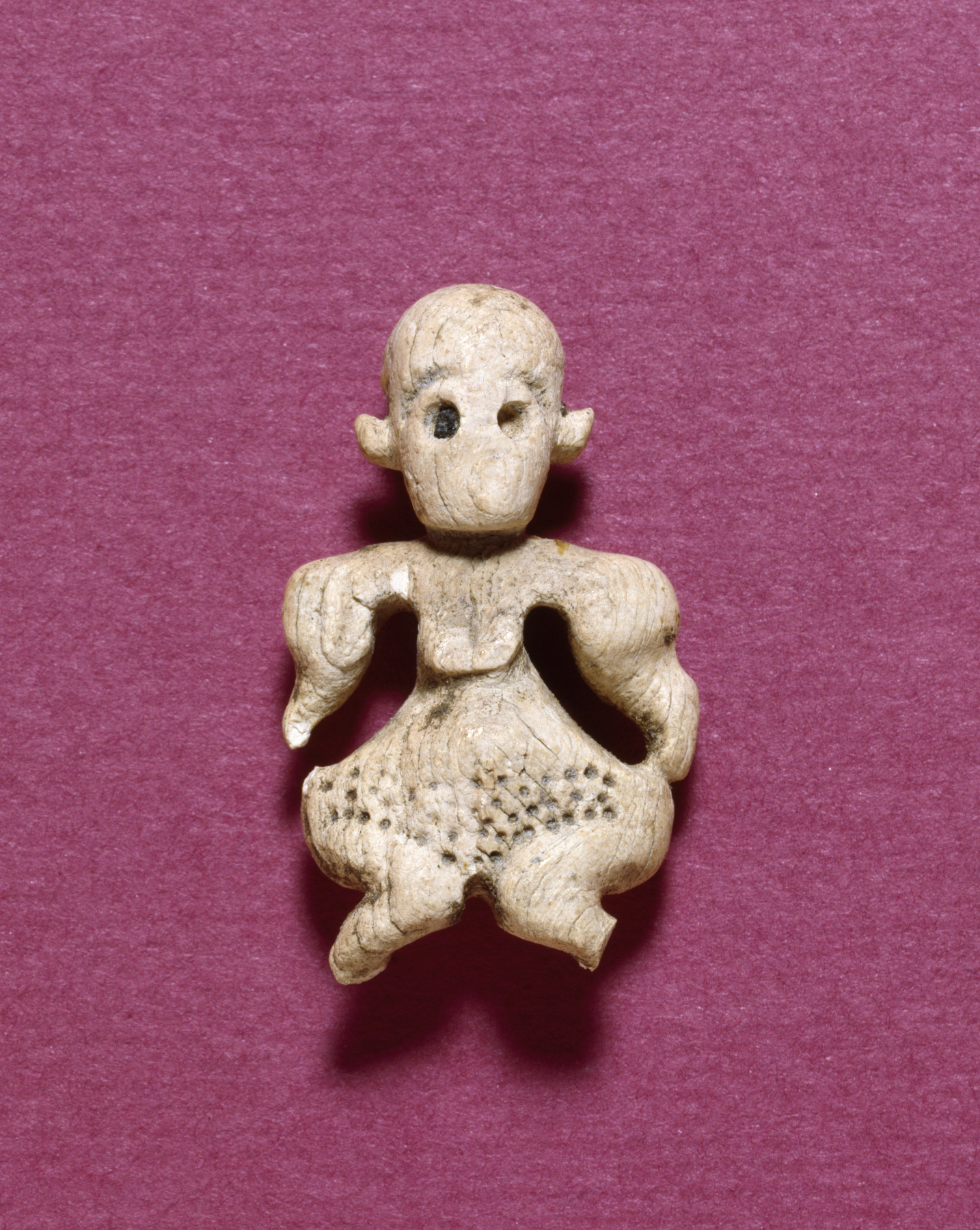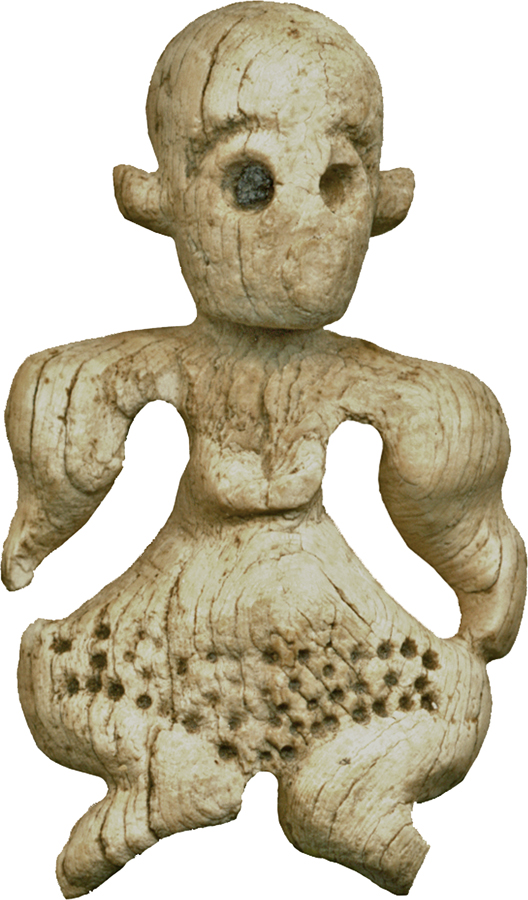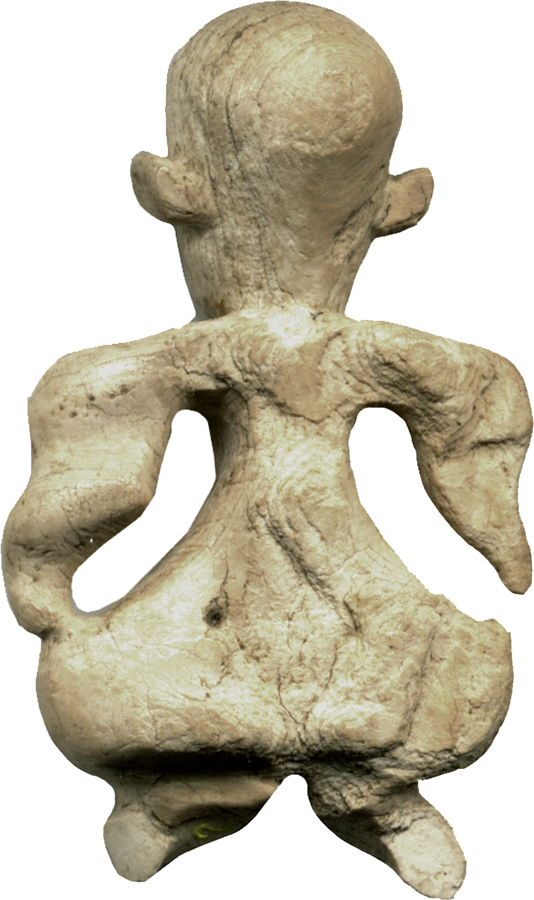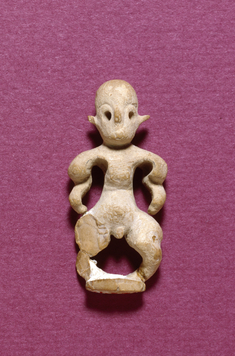Female Figure, Possibly with Dwarfism
Individuals with dwarfism played an interesting role in Egyptian society since Predynastic times. Dwarfism--a genetic condition characterized by unusually short stature and shortened limbs--is frequently represented in Egyptian tomb reliefs and statues. People with dwarfism were believed, because of their unusual appearance, to have supernatural powers and a special relation to the gods. Figurines depicting people with dwarfism were used as amulets and have been found in tombs as well as in ritual places.
This female figurine may have been depicted with the characteristics of dwarfism. She has a large forehead, perforations at the eyes to allow for inlay, and incised curved ridges to denote the brow. The upper arms are fat, the chest narrow, the hips wide, and the legs short and twisted. The wide pubic triangle is marked by a pattern of drilled holes. It is likely that this figure was used to secure fertility.
Provenance
Provenance (from the French provenir, 'to come from/forth') is the chronology of the ownership, custody, or location of a historical object.
MacGregor Collection [date and mode of acquisition unknown] [lot 712]; Dikran Kelekian, New York and Paris, 1922, by purchase; Henry Walters, Baltimore, 1923, by purchase; Walters Art Museum, 1931, by bequest.
Exhibitions
| 2006-2007 | Daily Magic in Ancient Egypt. The Walters Art Museum, Baltimore. |
Conservation
| Date | Description | Narrative |
|---|---|---|
| 11/16/1982 | Treatment | cleaned; examined for condition |
Geographies
Egypt (Place of Origin)
Measurements
H: 1 5/16 x W: 11/16 x D: 3/16 in. (3.28 x 1.78 x 0.42 cm)
Credit Line
Acquired by Henry Walters, 1923
Location in Museum
Not on view
Accession Number
In libraries, galleries, museums, and archives, an accession number is a unique identifier assigned to each object in the collection.
In libraries, galleries, museums, and archives, an accession number is a unique identifier assigned to each object in the collection.
71.532











